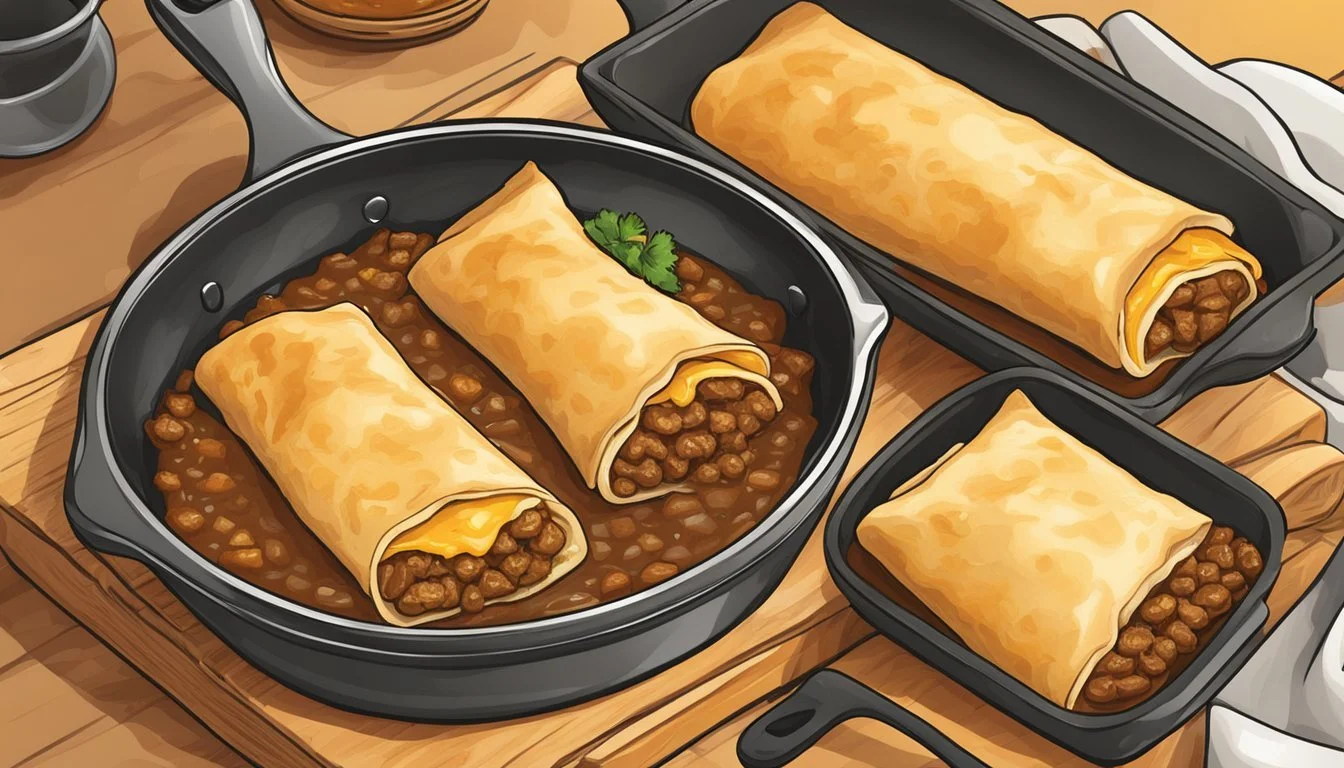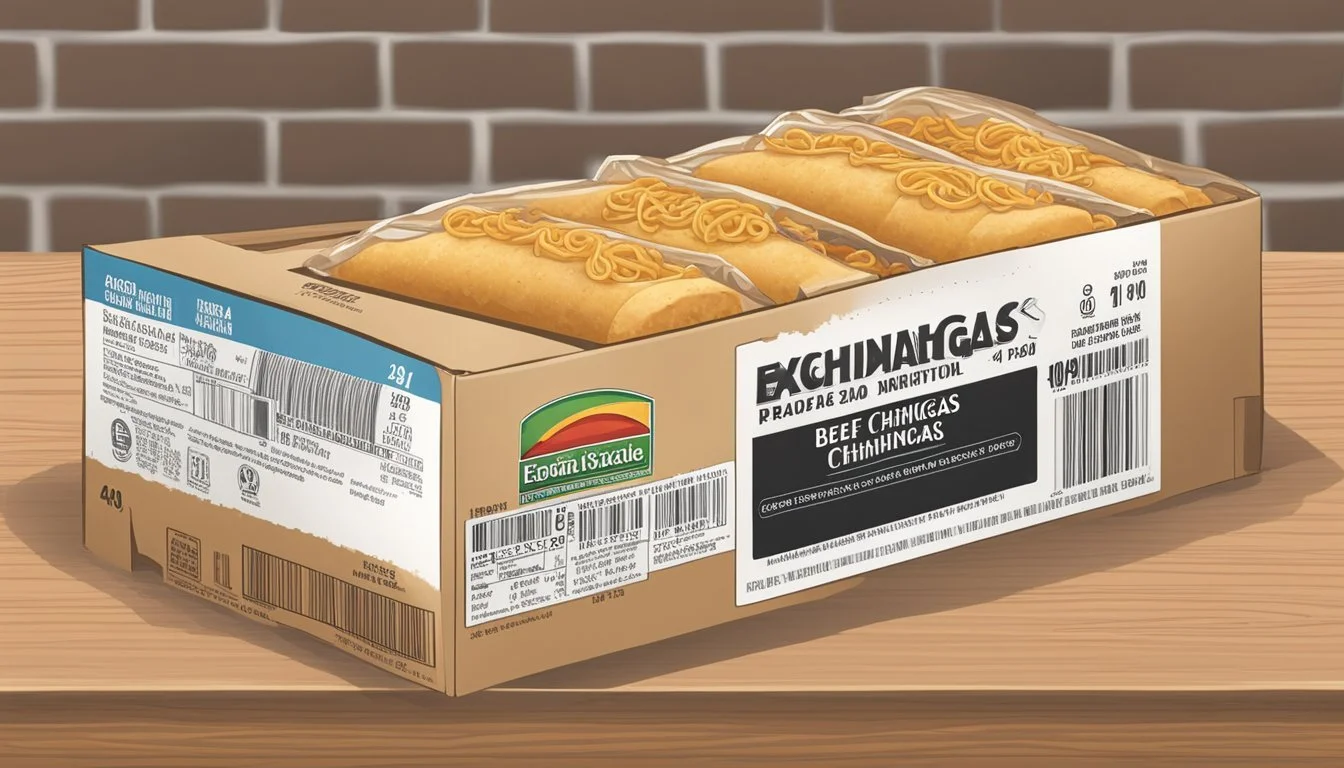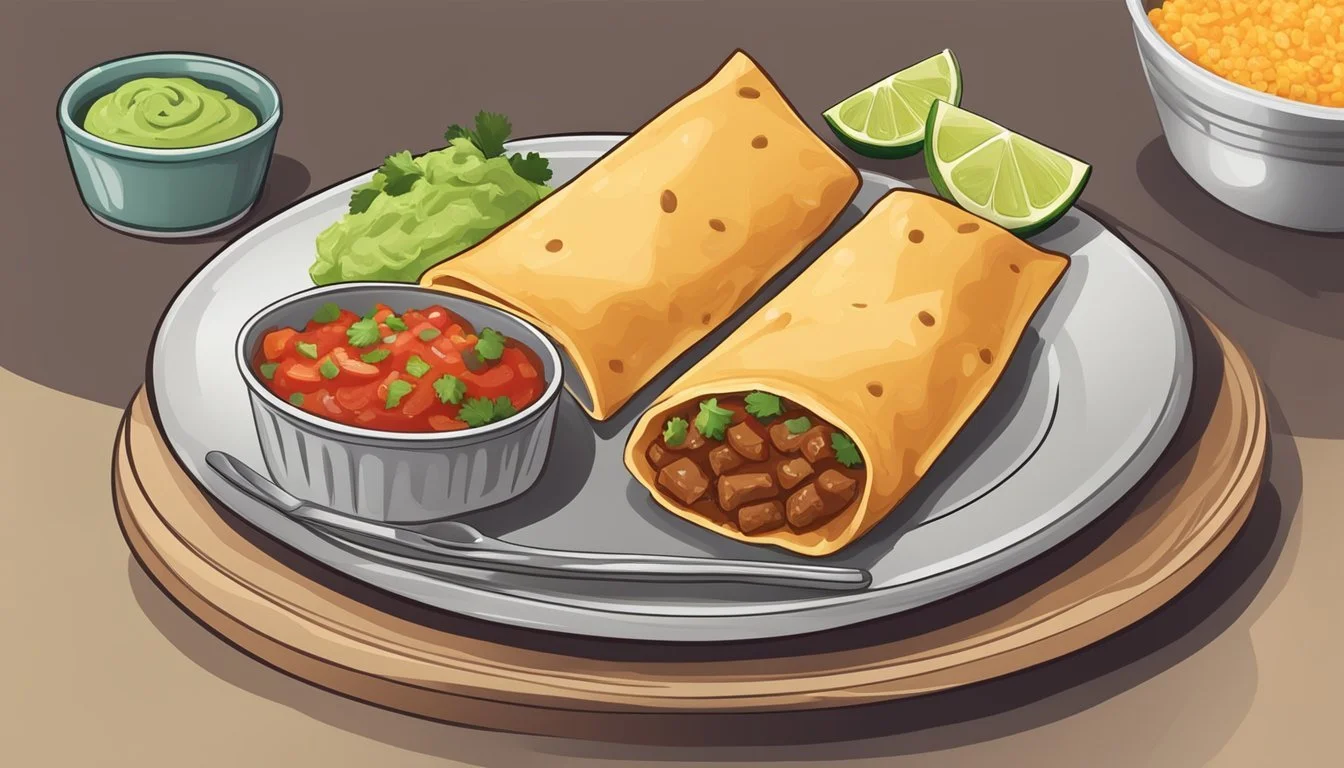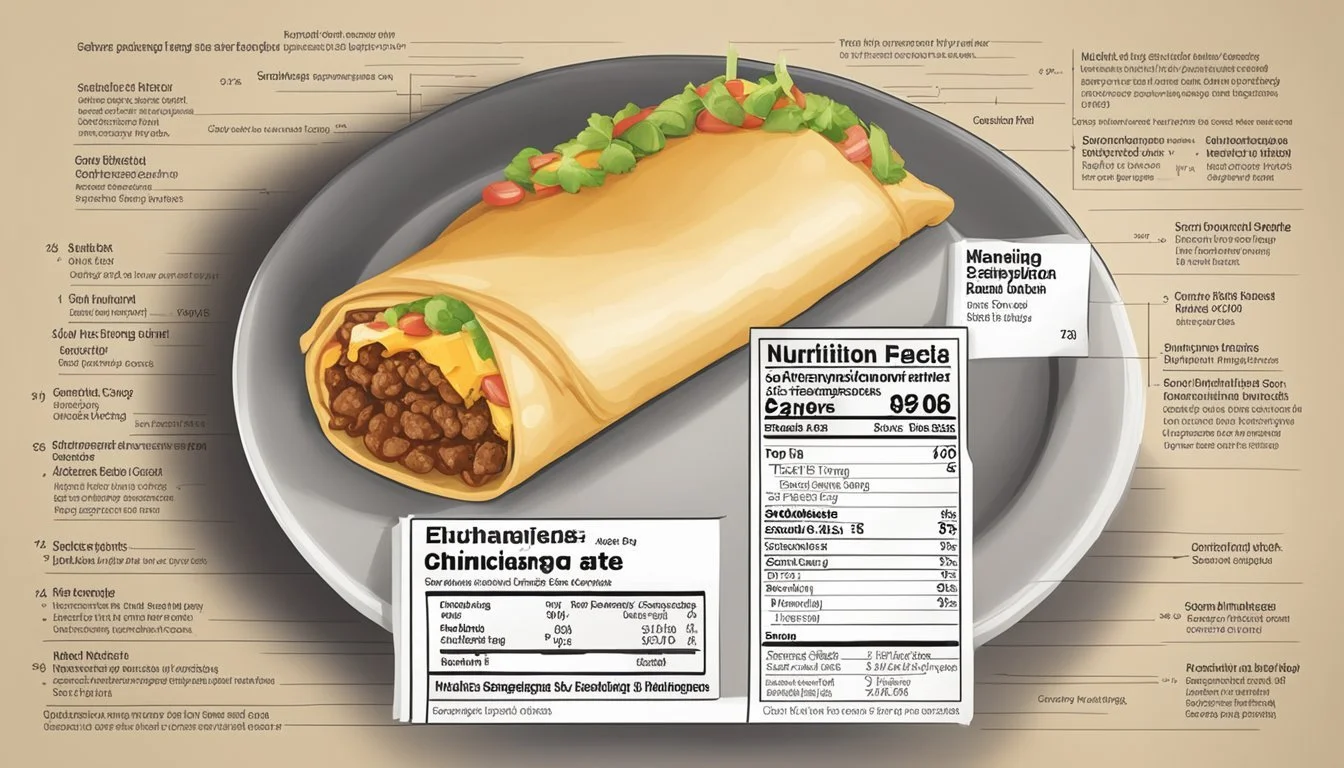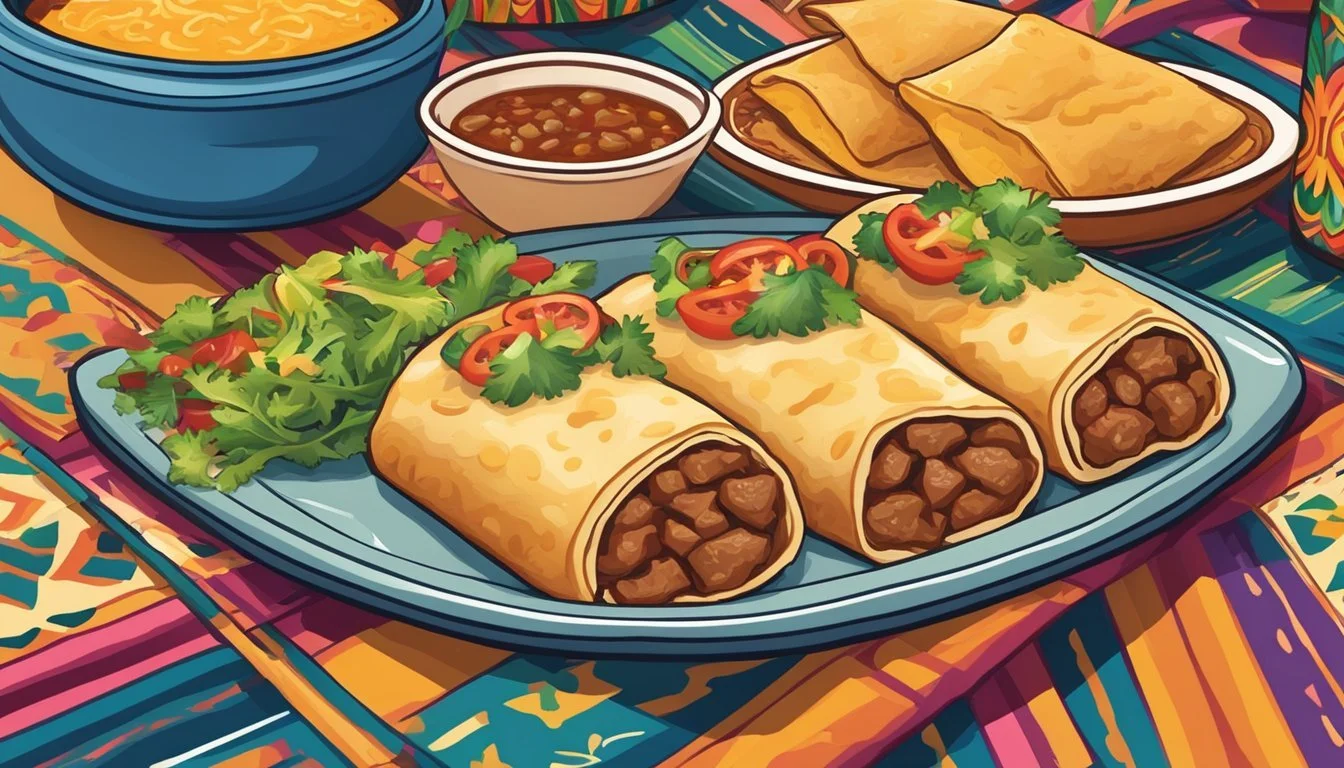How Long Do Beef and Cheese Chimichangas Last?
Storage Tips and Shelf Life
Beef and cheese chimichangas, a popular dish in Tex-Mex cuisine, are enjoyed for their crispy exterior and savory filling. Chimichangas, essentially deep-fried burritos, distinguish themselves from regular burritos by their unique preparation method, which gives them a delightful crunch. People often wonder about the shelf life of these delicious treats. When stored properly, beef and cheese chimichangas can last up to 3-4 days in the refrigerator.
Made from flour tortillas filled with a mixture of cooked ground beef, cheese, and seasonings, chimichangas can also be frozen to extend their shelf life. Freezing them can allow these tasty meals to last up to 2 months. When reheating, it's essential to ensure they are thoroughly warmed to maintain their quality and safety.
Understanding the difference between a burrito and a chimichanga can deepen the appreciation for this dish. While both are wrapped in tortillas, the chimichanga's fried nature sets it apart, adding a unique texture and flavor. These Tex-Mex staples remain a favorite among many, providing both convenience and satisfaction.
Essential Ingredients
A well-made beef and cheese chimichanga relies on carefully chosen meats, tortillas, cheese varieties, and vegetables. The selection of these ingredients can greatly influence the flavor and texture of the final dish.
Meats and Proteins
The primary protein in beef and cheese chimichangas is typically ground beef. It's crucial to brown the ground beef in a skillet over medium heat until fully cooked, ensuring there’s no pink left. For variety, chicken can also be used, providing a different taste profile while still offering high protein content.
Seasoning the meat with spices like chili powder, cumin, and oregano enhances its flavor. Draining excess grease keeps the filling from becoming too oily. These seasoned meats are the core of the filling, offering both taste and nutrition.
Tortillas and Wraps
Flour tortillas are the standard choice for chimichangas due to their pliability and ability to hold the filling without breaking. A good-quality flour tortilla is essential for ensuring that the chimichanga can be wrapped securely and fried to a crispy texture.
Warm the tortillas slightly before filling them, making them easier to roll. For a different twist, spinach or herb-infused tortillas can be used, adding a unique flavor and a subtle color change. The choice of tortillas can significantly affect the overall taste and presentation of the chimichanga.
Cheese Varieties
Cheddar cheese is commonly used in beef and cheese chimichangas for its sharp flavor and good melting properties. Shredded cheese should be evenly distributed in the filling to ensure every bite has a cheesy taste. Another popular choice is queso, which adds a creamy texture.
Mixing different types of cheese, such as Monterey Jack or Colby, can enhance the overall flavor profile. The cheese not only contributes to the taste but also helps bind the filling ingredients together. Using high-quality cheese ensures a rich, satisfying chimichanga.
Vegetables and Beans
Vegetables and beans add essential nutrients and flavors. Refried beans are a staple, providing a creamy texture that complements the meat. Alternatives like black beans or pinto beans can also be used. These beans add extra protein and fiber, making the chimichanga more filling.
Common vegetable additions include diced onion, bell peppers, and jalapenos for a bit of heat. Lettuce, tomatoes, and green onions often serve as fresh toppings after frying. Additionally, sautéed mushrooms and spinach can be included in the filling for added flavor complexity. The right mix of vegetables and beans enhances both the nutritional value and taste of the chimichanga.
Chimichanga Preparation
Preparing beef and cheese chimichangas involves creating a savory filling, seasoning it perfectly, wrapping the ingredients in tortillas, and choosing the ideal cooking method to achieve a delightful crispy texture.
Filling the Chimichangas
The filling of a chimichanga is essential for its flavor and texture. Ground beef is typically the primary ingredient, cooked until completely browned and drained of excess grease. Cheese, usually cheddar or Monterey Jack, is added generously to the cooked beef to impart a rich, gooey texture.
Additional ingredients like beans, rice, and minced garlic can enhance the filling. Inclusion of green chilies and onions adds a slight kick and depth of flavor. Combining all these elements results in a robust filling that bursts with taste in every bite.
Seasoning the Mixture
Seasoning is pivotal for a flavorful chimichanga filling. Once the ground beef is browned and drained, various spices are blended into the meat. Common seasonings include salt, black pepper, chili powder, ground cumin, dried oregano, and taco seasoning.
The use of garlic salt or seasoned salt can intensify the overall savory taste, while fresh or minced garlic enhances the aroma. Mixing these spices thoroughly with the beef ensures an even distribution, making each mouthful as tasty as the next.
Wrapping Technique
Proper wrapping technique is key to keeping the filling inside the tortilla during cooking. Flour tortillas are most commonly used for their pliability and neutral flavor. The beef and cheese mixture is spooned into the center of the tortilla, making sure not to overfill.
The sides of the tortilla are folded over the filling, then the bottom edge is rolled up tightly. Using a toothpick to secure the seam is recommended to prevent the chimichanga from unwrapping. Mastering this wrapping technique ensures an even cook and helps maintain the chimichanga’s shape.
Cooking Options
Chimichangas can be cooked using different methods based on preference and available equipment. Deep-frying in canola or vegetable oil is traditional, yielding a crispy exterior. Alternatively, baking in an oven at 400°F for 20-25 minutes provides a less greasy option while still achieving a crunchy texture.
For a lighter version, using an air fryer can mimic the crispiness of deep-frying with minimal oil. Lastly, microwaving is the quickest method, although it doesn’t provide the same crispy result. Each method offers unique advantages, allowing one to customize their cooking approach to fit their needs.
Storage and Shelf Life
Proper storage is essential to maintain the freshness of beef and cheese chimichangas. By following refrigeration and freezing guidelines, you can extend their shelf life and enjoy them safely.
Refrigeration Guidelines
Beef and cheese chimichangas should be stored in the fridge if you plan to consume them within a few days. Leftover chimichangas need to be wrapped tightly in parchment paper or plastic wrap to prevent them from drying out.
Storage times in the refrigerator:
Cooked beef chimichangas: 3 to 4 days
Cooked cheese chimichangas: Up to a week
Refrigerating chimichangas promptly after cooking helps prevent the growth of harmful bacteria. They should be placed in the fridge within two hours of cooking. To reheat, use an oven or microwave. Ensure they are heated thoroughly to an internal temperature of 165°F (74°C).
Freezing and Thawing
Freezing is an excellent option for extending the shelf life of beef and cheese chimichangas. Freeze them individually wrapped in parchment paper and then place them in a freezer-safe bag or container. This method helps avoid freezer burn and maintains quality.
Freezing times:
Beef chimichangas: Up to 3 months
Cheese chimichangas: Up to 2 months
When ready to enjoy, transfer the chimichangas from the freezer to the fridge to thaw overnight. Reheat using an oven or microwave. For best results, use the oven to maintain a crisp texture. Always confirm the internal temperature reaches 165°F (74°C) before eating.
Properly following these storage guidelines will ensure your beef and cheese chimichangas remain fresh and safe to eat.
Serving Suggestions
Beef and cheese chimichangas pair well with a variety of toppings and sides, enhancing their rich, savory flavor. Consider these options to elevate your meal.
Traditional Toppings
Popular toppings for chimichangas include sour cream, guacamole, and pico de gallo. These add a cool, creamy contrast to the fried chimichanga.
Salsa, whether mild or spicy, brings a tangy flavor, while queso sauce adds a smooth, cheesy layer. Shredded lettuce and chopped tomatoes offer a fresh, crunchy texture that complements the dish's richness. For extra zest, garnish with lime wedges, allowing guests to squeeze fresh lime juice over their chimichangas.
Sides and Accompaniments
Serve chimichangas with rice and beans for a hearty and balanced meal. Lime rice offers a fragrant citrus note, while refried beans provide a creamy, savory element. For a fresher option, serve with a side of shredded lettuce and chopped tomatoes.
Avocado slices or guacamole can also be served on the side to add a creamy texture. Add green chilies for those who enjoy a touch of heat. These combinations not only round out the meal but also provide complementary flavors and textures.
Nutritional Information
A beef and cheese chimichanga provides a variety of nutrients essential for the body. Each serving contains approximately 443 calories.
The protein content is notable, with around 20 grams of protein per serving. This contributes significantly to daily protein needs.
Carbohydrate content is close to 39 grams, offering energy for daily activities.
Fat content varies depending on preparation but typically includes beef and cheese, which are higher in fats.
Here's a brief summary of the nutritional values:
Nutrient Amount per Serving Calories 443 Protein 20 grams Carbohydrates 39 grams Fat Varies
Incorporating this information helps in managing a balanced diet while enjoying the rich flavors of beef and cheese chimichangas.
Health Considerations
Beef and cheese chimichangas, while delicious, come with several health considerations that should not be overlooked.
Nutritional Content:
Saturated Fat: Both ground beef and cheese contain high levels of saturated fats, which can contribute to increased cholesterol levels and heart disease risk.
Trans Fat: Depending on the preparation, trans fats can be present, particularly if using partially hydrogenated oils during frying.
Cholesterol and Sodium:
Cholesterol: Beef and cheese are significant sources of dietary cholesterol. Consumption of foods high in cholesterol should be moderated to maintain cardiovascular health.
Sodium: Chimichangas often have high sodium content due to seasonings and processed cheese. Excessive sodium intake can lead to hypertension and other heart-related issues.
Dietary Fiber:
Chimichangas typically lack dietary fiber. A diet low in fiber can result in digestive issues like constipation. Incorporating ingredients like beans can help increase fiber content.
Cooking Method:
Frying vs. Baking: Traditional chimichangas are fried, adding extra fats and calories. Baking is a healthier alternative that can reduce these negative impacts.
Portion Control:
Large portion sizes can contribute to overeating, which is a common issue with high-calorie foods like chimichangas. Mindful eating practices and portion control are recommended.
Regular consumption of high-fat, high-sodium foods like beef and cheese chimichangas should be balanced with healthier options to maintain a well-rounded diet. Monitoring the ingredients and preparation methods can help mitigate some of these health concerns.
Customization Ideas
Beef and cheese chimichangas can easily be customized to suit different tastes and dietary needs.
For a healthier option, consider baking the chimichangas instead of frying them. This method reduces the amount of oil and maintains a crispy texture.
Meat lovers can experiment with different types of protein such as shredded chicken, turkey, or even meat substitutes like soy-based crumbles.
Those who prefer a vegetarian chimichanga can fill it with spinach, mushrooms, beans, and cheese.
Green chilies add a spicy kick; mix them into the filling for extra flavor.
Here are some customization ideas:
Ingredient Option Protein Ground beef, shredded chicken, turkey, meat substitutes Vegetables Spinach, mushrooms, beans, green chilies Cooking Method Baking, frying
Adding an assortment of vegetables like diced onions, peppers, and corn can enhance the texture and nutritional value.
Experiment with different cheeses such as Monterey Jack, cheddar, or even pepper jack to find your preferred flavor.
Customizing your chimichangas can make them a versatile meal to suit various preferences and dietary requirements.
History and Culture
Beef and cheese chimichangas are a staple in Tex-Mex cuisine, known for their deep-fried burrito form. They are often filled with meat, beans, and rice. The origins trace back to the Southwestern United States, particularly within the Tex-Mex food tradition.
Chimichangas emerged in the mid-20th century. According to some sources, Monica Flin, a restaurateur in Tucson, Arizona, created the modern chimichanga by accident in the late 1940s.
Tex-Mex food is a fusion of Texan and Mexican culinary traditions. It evolved as Mexican immigrants adapted their recipes using American ingredients. This cuisine prominently features elements like cheddar cheese, sour cream, and processed spices.
Across the United States, particularly on Taco Tuesday, chimichangas have become popular. This tradition encourages people to enjoy various Mexican foods, including tacos, burritos, and, naturally, chimichangas.
The adaptation of Mexican dishes into American food culture has led to variations. These include using different cheeses like queso fresco and adding American spices like cumin.
While some argue about the authenticity, chimichangas undeniably hold a place in Tex-Mex and Mexican cuisine. Their crispy exterior and flavorful fillings make them a beloved dish in both home kitchens and restaurants.
Key Ingredients often include:
Beef
Cheese
Beans
Rice
Flour Tortilla
The ongoing popularity of beef and cheese chimichangas underscores their place in the rich tapestry of Tex-Mex and Mexican food cultures.



